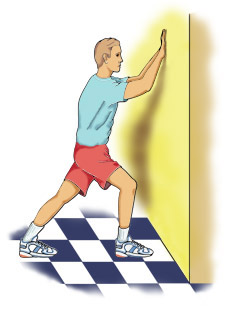Plantar Fasciitis Braces in Tsin Shui Wan HKSAR
Podiatrists for Plantar Fasciitis Treatment in Tsin Shui Wan HKSAR, China

Achilles Tendon Injury Or Rupture. Achilles tendon bursitis is inflammation of the fluid-filled sac (bursa) located either between the skin of the back of the heel and the Achilles tendon (posterior Achilles tendon bursitis) or in front of the attachment of the Achilles tendon to the heel bone (anterior Achilles tendon bursitis, retrocalcaneal bursitis). Initially, the client with Achilles tendonitis will be asked to modify their activities to reduce their running and jumping activities and do alternative exercises, such as swimming, which don't put as much stress on the Achilles tendon. The discomfort from Achilles tendonitis is typically so severe that running is impossible and even strolling is uncomfortable. Achilles tendonitis is usually an overuse injury brought on by doing too much too soon. Even in mild cases, it can take weeks to months of rest for the tendon to fix itself. More persistent injuries might react much better to heat treatment with a strict 12 week heel drop workout program which has been shown to be efficient. Once you have the ability to do the heel drops without any discomfort, gradually add weight utilizing a backpack. Achilles tendonitis generally responds effectively to conservative treatment as long as it is diagnosed and treated early. To me pressure injured it as well as it looked as though a bone had swollen not a tendon due to the fact that the swelling was hard. Achilles tendonitis has the tendency to happen more frequently in older professional athletes than in more youthful athletes. However, Achilles tendonitis can likewise take place in teens who are really active in running and jumping sports. These treatments are a little bit more costly or time consuming and are just suggested for if you experience chronic Achilles discomfort or the conservative treatments are not working for you. If the professional athlete over pronates when running then this can trigger the foot to flatten which in turn triggers the lower leg to turn inwards which twists the achilles tendon enhance the stresses on it making it more prone for over use. For persistent cases where tendinosis is noticeable and other techniques of treatment have actually failed, surgery may be suggested to get rid of and repair the damaged tissue. The Hakan Alfredson's heel drop procedure exercises have been revealed to be effective in as much as 90 % of patients suffering with achilles tendon discomfort and involve the client dropping the heel to horizontal in a controlled and slow way. A broken shoe or one that does not offer enough assistance can enhance the pressure on the achilles tendon. Try heel-cord workouts to increase your strength and versatility if your heel or heel cord (Achilles tendon) is unpleasant and tight. Remain in good shape year-round and try to keep your muscles as strong as they can be. Strong, flexible muscles work more efficiently and put less tension on your tendon. Longer term chronic Achilles tendon injuries may respond much better to application of heat, once again applied for 10 minutes every number of hours as needed. Gentle calf extending exercises can help stretch the muscles and help healing.
Heel Pain Doctors and Surgery in Hong Kong
Previous Plantar Fasciitis Brace Next Plantar Fasciitis Brace Supplier
Plantar Fasciitis Braces Around Hong Kong
Plantar Fasciitis Braces in Shan Tseng HKSAR
Plantar Fasciitis Braces in Ngau Kwu Long HKSAR
Plantar Fasciitis Braces in Tai Lam Chung HKSAR
Plantar Fasciitis Braces in Shing Uk HKSAR
Plantar Fasciitis Braces in Fu Tei Wan HKSAR
Plantar Fasciitis Braces in Hei Tsz Wan HKSAR